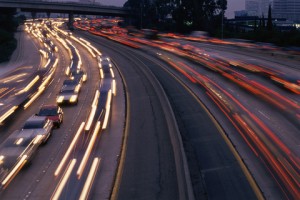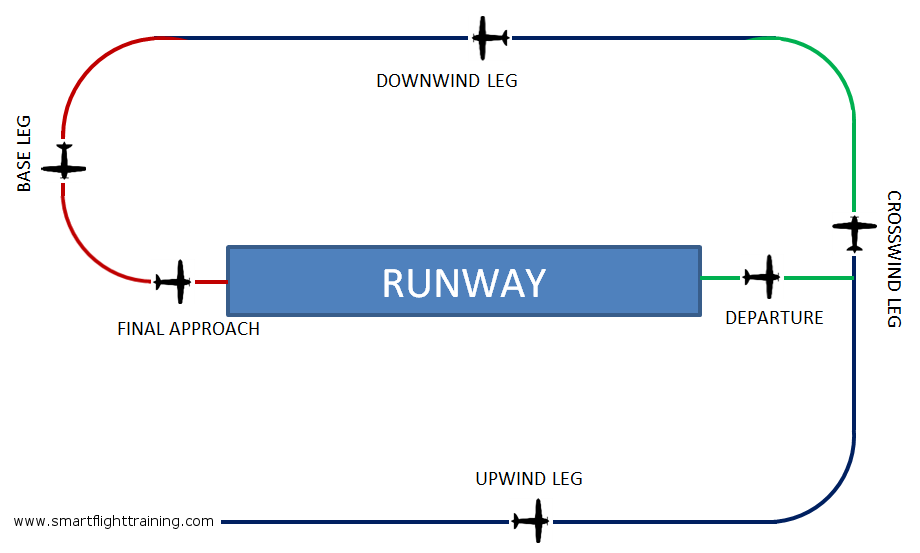 You’re in your car, getting ready to merge on to the freeway. You accelerate, turn on your blinker, check your mirrors and blind spot, adjust your speed to fit in when someone makes a gap for you (if you’re lucky), and merge. Now on the freeway, you find yourself behind a slower-moving vehicle. You merge left and pass on that side, and then back to the right lane when you are done.
You’re in your car, getting ready to merge on to the freeway. You accelerate, turn on your blinker, check your mirrors and blind spot, adjust your speed to fit in when someone makes a gap for you (if you’re lucky), and merge. Now on the freeway, you find yourself behind a slower-moving vehicle. You merge left and pass on that side, and then back to the right lane when you are done.
Traffic patterns on the road are pretty predictable. You might have one-way streets or two-way streets, probably speed limit signs and speed bumps, stop signs, stop lights, yield signs, construction barrels, lane markings, and on and on. You know these rules because you studied them and have experience with them.
This is no different from the rules of flight, only there aren’t lines painted in the sky (on the airport is a completely different story), nor are there speed limit signs or lights up there.
But there ARE rules to follow – and sometimes just “suggestions” (or what folks in the business world might call “best practices”).
Let’s discuss airport traffic patterns. On the road, you know generally what to expect of other drivers – where they are apt to be, what speed they are probably going, and what they are most likely going to do next. This is all good information to know, as you can base YOUR next move on what you know and expect others are doing.
The same thing applies in the air.
Did you know that most mid-air collisions occur in the vicinity of an airport? It’s true. This is why it is critical to understand what is (or should be) happening around airports when you are arriving or departing from one.
Using the airport runway as a guide, there are six possible “legs” that planes might be flying around the runway.
“But wait!” you say, “How can there be six legs when a runway only has four sides? Shouldn’t there only be four legs around a runway?” Correct you are; but part of a traffic pattern at an airport has to do with altitude (or at least how altitude is changing and what the pilot aims to do on that leg). Bear with me:
Chapter 4, section 3 of the Aeronautical Information Manual (AIM) discusses traffic patterns:
- Upwind leg. A flight path parallel to the landing runway in the direction of landing.
- Crosswind leg. A flight path at right angles to the landing runway off its takeoff end.
- Downwind leg. A flight path parallel to the landing runway in the opposite direction of landing.
- Base leg. A flight path at right angles to the landing runway off its approach end and extending from the downwind leg to the intersection of the extended runway centerline.
- Final approach. A flight path in the direction of landing along the extended runway centerline from the base leg to the runway.
- Departure leg. The flight path which begins after takeoff and continues straight ahead along the extended runway centerline. The departure climb continues until reaching a point at least 1/2 mile beyond the departure end of the runway and within 300 feet of the traffic pattern altitude.
In the image above, you can see a standard traffic pattern – which means the airplane is making left hand turns, and is landing (and taking off) from left to right as you see it here on the page. The blue color lines mean the plane is at a constant altitude, green means the plane is climbing, and red means the plane is descending. The only exception to these color patterns would be if a plane went from upwind to crosswind (then all of the crosswind leg would be maintaining altitude), versus from departure to crosswind (in which case the aircraft would be climbing in crosswind).
You can see why upwind, downwind, and crosswind are named such, knowing that aircraft always take off and land into, or against, the wind (upwind). I like to think that base leg is called “base” because it is really the foundation of your landing (the “base” of a house is its foundation – and if it isn’t right, the whole house will never be right) – if the base leg isn’t right, your whole landing will suffer for it. Final approach is just that – final. It’s your last chance to get the approach together before you touch down.
If you use the same lines, but imagine the plane going the opposite direction, you can imagine a “right-hand” pattern. This is technically “non-standard,” but that does not mean that it happens less. In fact, many airports use “right traffic” as their pattern (you might even see right traffic when taking off in one direction, and left traffic when taking off in the opposite direction) – so it pays to do your research before you go to a new airport!
Do you have anything to add to this discussion of airport traffic patterns? Take your turn in the comments!
Andrew Hartley is a Certificated Flight Instructor in Columbus, Ohio

Leave a Reply